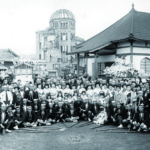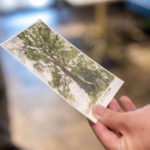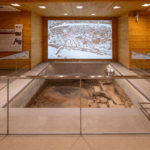I Why People Are Interested in the Reconstruction of Hiroshima
The Japanese word for reconstruction – fukko – is both new and old. The greatest shared experience of reconstruction for the Japanese people is the reconstruction following the destruction left behind in the wake of the Second World War. Over 200 municipalities in Japan were burned down in air raids, and war damage reconstruction projects were carried out in 115 cities by the War Damage Reconstruction Agency during the postwar period. In more recent years, the Great East Japan Earthquake of 2011, coupled with the severe damage caused by the resulting Fukushima Daiichi Nuclear Power Plant accident, has brought back the use of the word fukko (reconstruction), which is a serious, ongoing task not only for the victims of this disaster but also for every citizen of Japan.
Under the war damage reconstruction projects, Hiroshima, an A-bombed city, was at first treated in the same way as other cities that were destroyed in air raids carried out with conventional weapons.1) For many years, no special attention was paid to the reconstruction of Hiroshima. However, in more recent years, after the Great East Japan Earthquake occurred on March 11, 2011, coupled with the severe damage caused by the resulting Fukushima Nuclear Power Plant accident, Fukushima and Hiroshima began to be discussed together, and more attention was directed towards the reconstruction of Hiroshima. This is mainly because both Hiroshima and Fukushima have experienced radiation disasters, but is this the only reason Hiroshima’s reconstruction is receiving attention recently?
Since the end of the Cold War, conflicts and civil wars stemming from ethnic, religious and cultural differences have occurred in various parts of the world, such as in the former Yugoslavia, Rwanda, East Timor and Sudan, as well as in Iraq and Afghanistan, where wars erupted after the terrorist attacks on the United States in 2001. In all these cases, reconstruction itself has become a big issue for peacebuilding. When people engaged in the reconstruction projects of these war-stricken countries visit Hiroshima, they are always impressed at the feat of the reconstruction of Hiroshima.
Of course, their words may simply be compliments, and, as stated before, Hiroshima is not the only city which was reconstructed from a field of burnt-out ruins. But many people who visit Hiroshima and walk through the city, after visiting Peace Memorial Park and Peace Memorial Museum, say they want to learn more about the reconstruction of Hiroshima. What about Hiroshima, during their visit, causes them to view it as an example of reconstruction, and what do they want to learn from Hiroshima?
However, before trying to answer these questions, we must first ask ourselves, “What is the reconstruction of Hiroshima?” This report is the compilation of Hiroshima’s own efforts in answering these questions.
Notes
1. In May 1949, the Hiroshima Peace Memorial City Construction Law, a special law drafted by House members, was adopted in order to secure a special budget for Hiroshima. Based on this law, the national government provided more assistance to Hiroshima than to the other cities being reconstructed on general war damage reconstruction projects.








